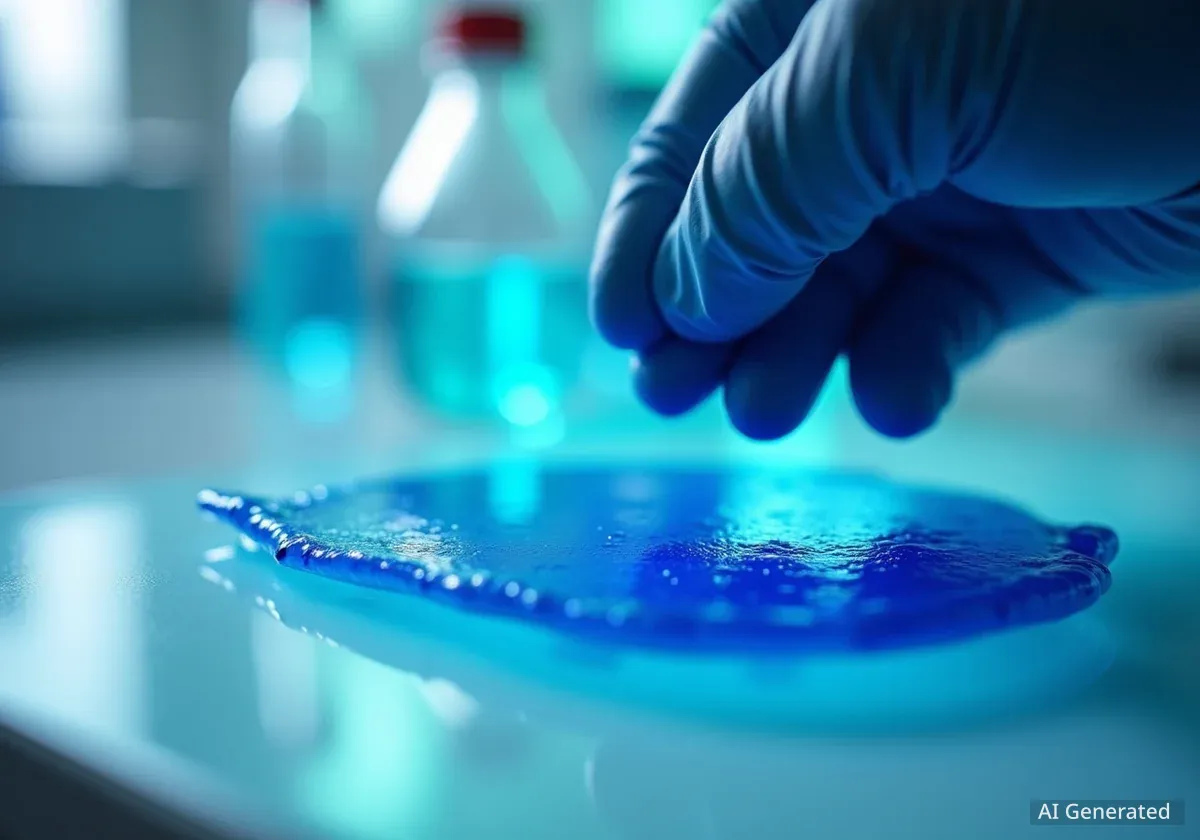The exact nature of the vibrant blue pigment in Jackson Pollock’s iconic painting, Number 1A, 1948, has remained a mystery for over 77 years. Now, a team of scientists from Stanford University has identified the elusive color as manganese blue. This discovery offers new details about Pollock's artistic choices and the materials he used in his groundbreaking work.
Key Takeaways
- Jackson Pollock's Number 1A, 1948 blue pigment is manganese blue.
- The identification took 77 years due to previous analytical challenges.
- Stanford University chemist Alexander Heyer led the research team.
- Manganese blue, developed in 1907, was known for its pure, electric hue.
- The pigment was later banned due to toxicity concerns for artists and the environment.
Decades-Long Puzzle of Pollock's Blue
Jackson Pollock’s Number 1A, 1948 stands as a landmark in abstract expressionism. Its dynamic composition features streaks and splatters of various colors, including a particularly striking blue. Art historians and conservators have long sought to understand the specific pigment responsible for this distinctive hue.
Despite numerous attempts over the decades, the precise identity of the blue remained unknown. Early analytical methods faced technical limitations, preventing a definitive answer. The vibrant color’s origin was a significant gap in the understanding of Pollock's palette and techniques.
Fact: Jackson Pollock's Drip Painting
Jackson Pollock developed the 'drip painting' technique in the late 1940s. He placed canvases on the floor and poured, dripped, and splattered paint onto them. This method allowed him to work from all sides, creating a sense of total immersion in the artwork. Number 1A, 1948 is a prime example of this revolutionary style.
Advanced Science Uncovers the Truth
The breakthrough came from a research team at Stanford University. Chemist Alexander Heyer led the effort to apply advanced scientific methods to the painting. Their work focused on overcoming the challenges that had hindered previous investigations.
The team utilized Raman spectroscopy, a technique that uses a laser to identify materials by their unique molecular vibrations. Previous attempts with this method were unsuccessful. The oil-based binder in Pollock's paint created fluorescence, which obscured the signal from the pigment itself. This interference made accurate identification difficult.
Overcoming Analytical Hurdles
To bypass the fluorescence issue, the researchers made a critical adjustment. They carefully collected small paint samples from the blue sections of the artwork. These minute scrapings were then analyzed using Raman spectroscopy with a lower energy laser line, specifically 785 nm.
This adjustment proved successful. The lower energy laser reduced the interfering fluorescence, allowing the scientists to capture clear spectral data. They then compared this data against known Raman spectra for various pigments. The comparison yielded a definitive match.
"The team's analysis revealed that two distinct electronic transition bands were responsible for this pigment’s unique ability to create such a pure hue," the researchers noted in their findings, highlighted by Science Alert.
The Identity of the Blue Pigment
The mystery pigment is manganese blue. This synthetic pigment, chemically known as barium manganate sulfate, was relatively new when Pollock created Number 1A, 1948. It was first developed in 1907 and became commercially available to artists in the 1930s.
Manganese blue was highly valued for its intense, clean blue color. Unlike other common blue pigments of the era, such as ultramarine or cobalt blue, manganese blue had a unique ability to filter non-blue light. This property allowed it to produce an exceptionally vivid and almost electric shade of blue.
Context: Pollock's Eclectic Palette
Jackson Pollock was known for using a wide range of materials in his art, often blending traditional artist's oil paints with industrial materials like enamel house paints. This unconventional approach allowed him to achieve unique textures and effects. In Number 1A, 1948, the black and white elements contrast with bright splashes of red, yellow, and the newly identified blue.
Properties and Concerns of Manganese Blue
According to the research team, manganese blue performed a difficult task: "creating clean hues from colors in the center of the visible spectrum." This characteristic explains why the blue in Pollock’s painting possesses such remarkable intensity and purity.
However, this vibrant pigment had a significant drawback. Manganese blue was eventually banned from production due to concerns about its toxicity. The pigment posed risks to both artists handling it and the environment. Its powerful properties came at a considerable cost to health and safety.
- Developed: 1907
- Market Introduction: 1930s
- Chemical Composition: Barium manganate sulfate
- Key Feature: Exceptionally pure, vibrant blue hue
- Reason for Ban: Toxicity concerns for artists and environment
Impact on Art Historical Understanding
This discovery adds manganese blue to the known palette of Jackson Pollock. Previously identified blue pigments in his works include ultramarine, phthalocyanine blue, cobalt blue, and Prussian blue. The inclusion of manganese blue provides a more complete picture of the materials Pollock chose for his art.
The new information helps art historians and conservators understand Pollock’s creative process in greater detail. It sheds light on his material choices and how he achieved the specific visual effects seen in his most famous pieces. The resolution of this 77-year mystery contributes significantly to the study of modern art and the techniques of a pivotal artist.
The research underscores the ongoing importance of scientific analysis in understanding art. Such studies can reveal hidden aspects of artworks, providing new contexts for their creation and appreciation.




